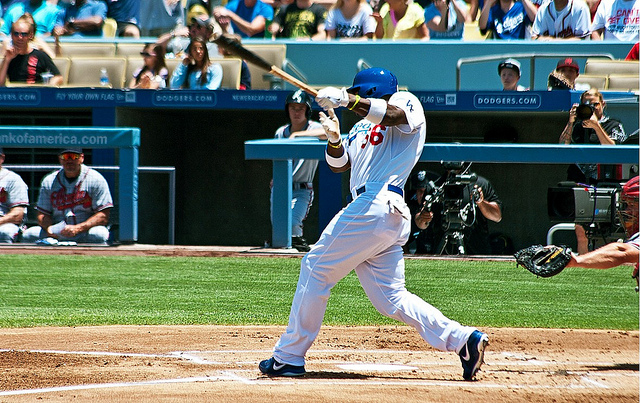
Caribbean, News Briefs, North America
As World Series Begins, So Does ‘Latin American Pipeline’ to MLB
October 21, 2014 By Dusty Christensen
When the opening pitch is thrown Tuesday night in game one of the World Series, a number of Latin American players will be front and center under the bright stadium floodlights.
What won’t be on display, however, are some of the darker stories behind how many Latin Americans make it to play in Major League Baseball in the first place.
This season, Latin American players made up close to a quarter of all MLB players — a staggering 86 percent of all foreign-born players in the league, the vast majority of whom are from the Dominican Republic, Venezuela and Cuba.
In the MLB-operated minor leagues, Latin Americans comprise almost half of all players. This steady flow of players is often referred to as the “Latin American pipeline,” and critics say a pattern of exploitation characterizes the entire system.
Mother Jones magazine refers to the academies where future ballplayers train as the “Dominican sweatshop system.” Latin America provides the MLB with a lucrative investment opportunity because they have historically been able to sign players from the region on the cheap.
“It’s the typical neoliberal kind of response: let’s go abroad, find cheap labor and operate like Walmart,” Dr. Alan Klein, an academic who studies baseball and globalization, said in an interview.
The MLB did not immediately respond to a request for comment for this article.
In the Dominican Republic, where over 40 percent of the population lives below the poverty line, according to World Bank data, kids are scouted at as young as 14. These players and their families see baseball as their only way of escaping poverty and, as a result, they often do whatever it takes to make it to the big leagues.
That includes playing in sweatshop-like conditions in MLB-operated baseball academies, which are almost all located in the Dominican Republic.
Examples abound. Yewri Guillén, an 18-year-old Dominican player died of bacterial meningitis in 2011 because there was no doctor or certified athletic trainer at the Washington Nationals’ academy where he lived and played.
At another Dominican academy operated by the Chicago Cubs, 19 teenage players were provided with only one bathroom that lacked running water, according to Arturo J. Marcano Guevara and David P. Filder’s book Stealing Lives. A drunken coach allegedly lorded over the boys, at times threatening them with a gun.
“It’s gone from just a handful of teams that had academies in the Dominican Republic or scouting departments in the Dominican Republic, to every single team,” The Nation magazine’s sports editor Dave Zirin, who has written extensively about the Latin American pipeline, said in an interview. “What these academies are, they’re cauldrons of exploitation.”
The MLB maintains its closest relationship with the Dominican Republic, where most of the academies are located.
Tensions emerged with Venezuela, the country that sends the second-most players to the MLB after the Dominican Republican, after the election of leftwing President Hugo Chávez in 1999. Chávez attempted to reform the academy system, prompting the MLB to largely withdraw from the country.
“He made a series of demands on major league teams about having more of an educational component, hiring more local coaches and basically trying to make them less exploitative,” Zirin said. “The response by Major League Baseball was to take the players from Venezuela and make them come to the Dominican Republic.”
While all 30 MLB teams currently have academies in the Dominican Republic, only five continue to operate in Venezuela, down from 21 teams in 2002.
In the Dominican Republic, the financial incentives of a MLB contract create a cutthroat atmosphere where young players will go to great lengths to increase their chances of making it to the major leagues. “These are highly vulnerable young men,” Klein says. “If they’re slightly injured, they don’t want to reveal that to anybody, for fear of getting thrown back into the D.R. like chopped liver.”
Players often hide their injuries, Klein says, by using performance-enhancing substances, including in some cases animal steroids and dietary supplements that are cheaper than products made for humans.
Some of these substances might actually be legal in the Dominican Republic, but are against the rules for MLB players. As a result, a large portion of players who fail tests for performance-enhancing drugs are from the Dominican Republic. When the league busted a group of 13 players last fall for using banned substances, 11 of them were from the Dominican Republic.
Although the Dominican Republic and Venezuela are the two countries that provide the most foreign-born players to the MLB, they aren’t the only two Latin American countries where players experience exploitation in their quest to play professional baseball in the United States.
This year, the story of Los Angeles Dodgers outfielder Yasiel Puig made headlines when the young star from Cuba admitted to having been trafficked to the U.S. in order to play baseball. Because of byzantine league regulations and the U.S. embargo on Cuba, many prospective talents from the island are forced to play in another country before being signed by a U.S. team.
As a result, many Cuban players resort to using human traffickers to reach a third country like Mexico. The smugglers, in turn, often extort players for a percentage of their future earning.
In the case of Puig, he was kidnapped and extorted, and some of the traffickers involved even killed one another to get their hands on a cut of his salary.
Other Latin American players starring in the World Series tonight faced more mundane hardships on their way to the MLB. Many of them, like Kansas City Royals shortstop Alcides Escobar and catcher Salvador Pérez, were signed as free agents and left their families when they were only teenagers.
In a desperate but ultimately successful attempt to attract scouts’ attention, San Francisco Giants pitcher Santiago Casilla played first in the Dominican Republic and later in the United States under the alias Jairo García, using false documents that listed him as three years older than he actually was. Giants infielder Pablo Sandoval, like many young Venezuelan players, traveled to the Dominican Republic and to play in MLB academies in order to be recognized.
As millions of baseball fans look forward to watching Tuesday night’s game, the MLB’s Winter Leagues have already begun in Latin America, with academies across the region busy searching for the “next big thing.”
Image: Ron Reiring, CC BY 2.0
About Dusty Christensen
Dusty Christensen is a writer based in New York City, and a producer of LAND's podcast, Radio Dispatch. His work has appeared at The Nation magazine, NPR's Latino USA, Eight by Eight magazine and Alternet, among other places. He speaks English, Spanish, Russian and Ukrainian with varying degrees of success, and is currently a Quechua-language FLAS Fellow at New York University.
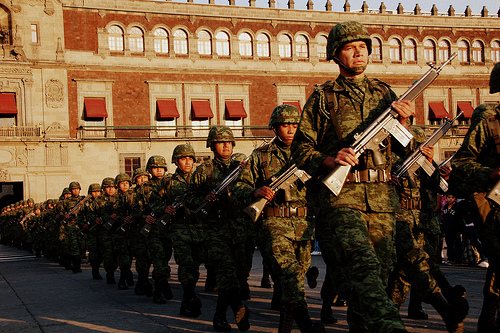
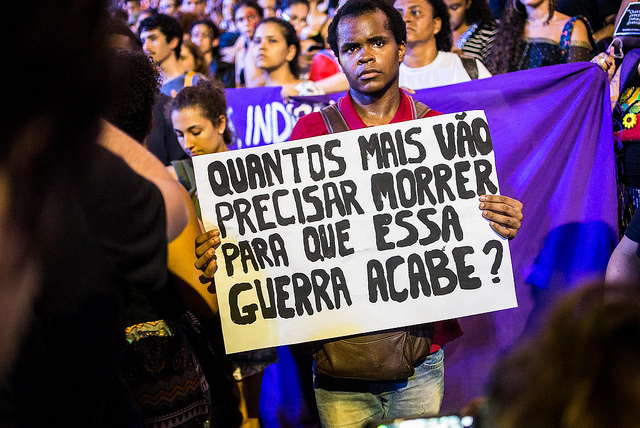

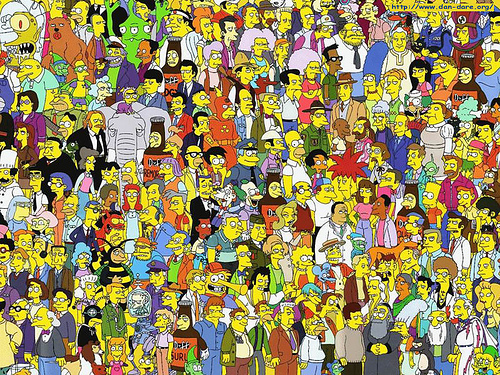
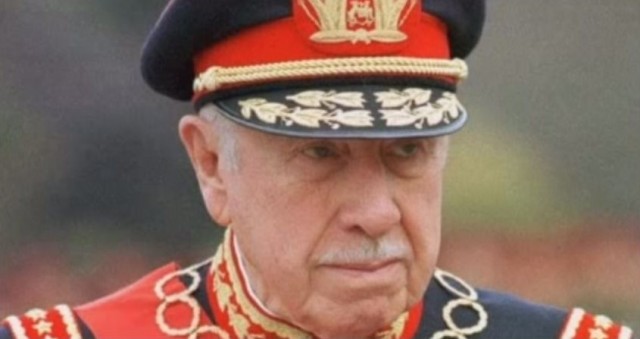
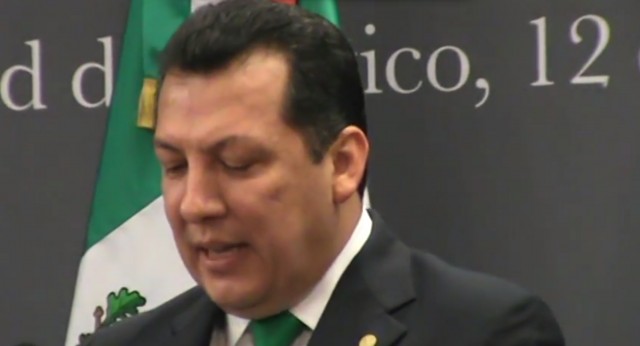
1 Comment
[…] helping smuggle baseball star Yasiel Puig out of Cuba — one of several players who have been kidnapped and extorted during their journey to play in the […]
Comments are closed.